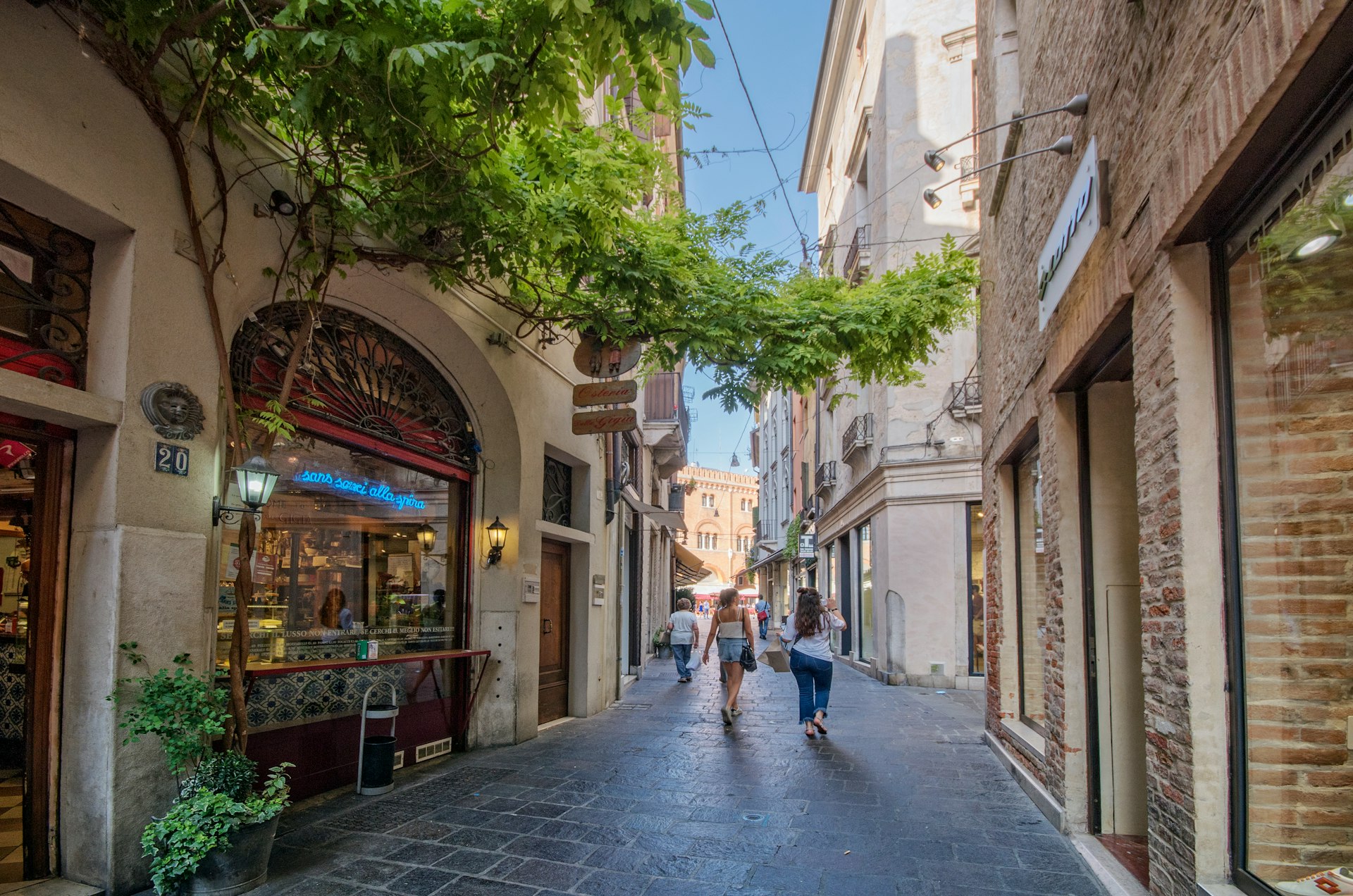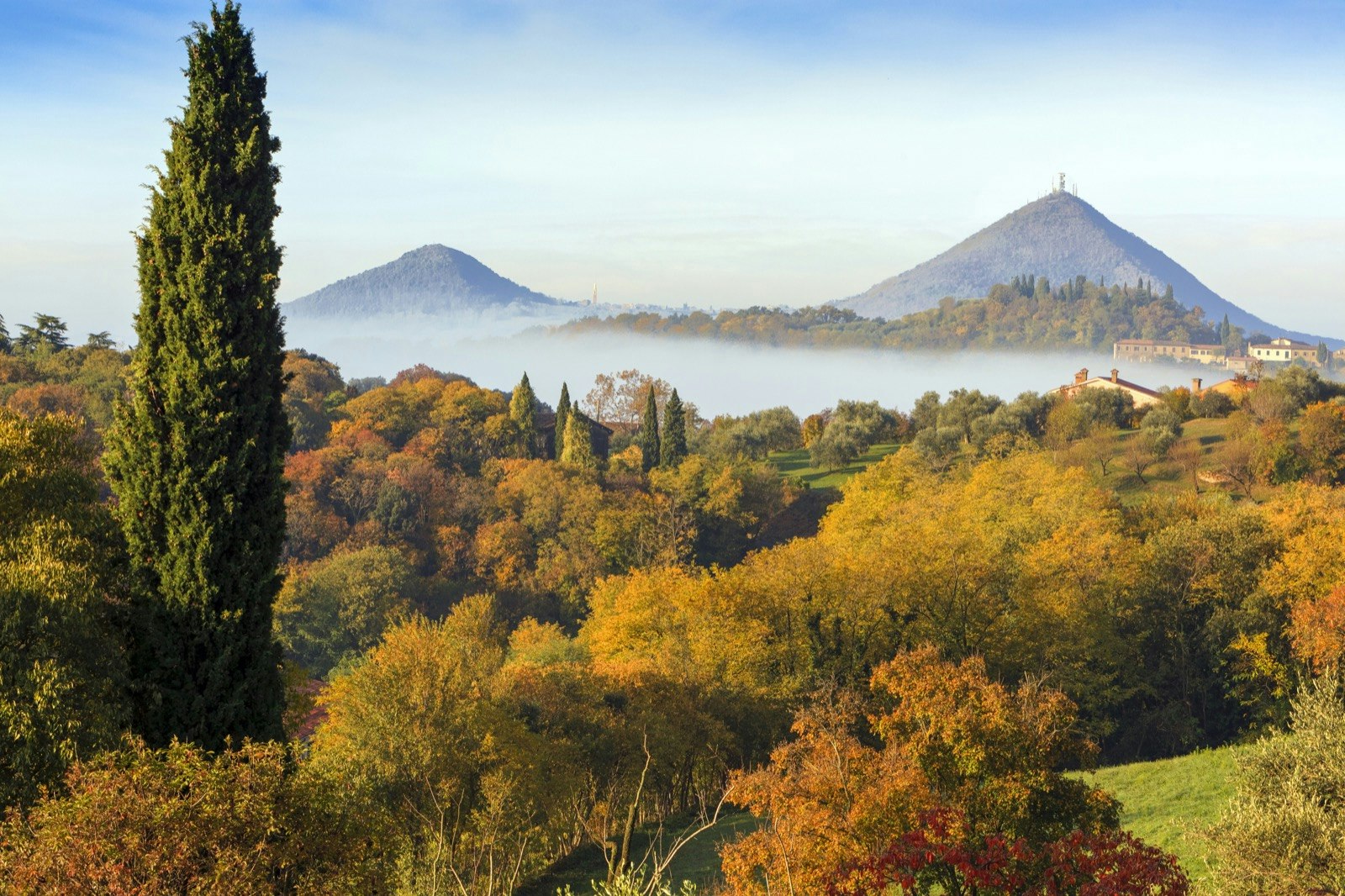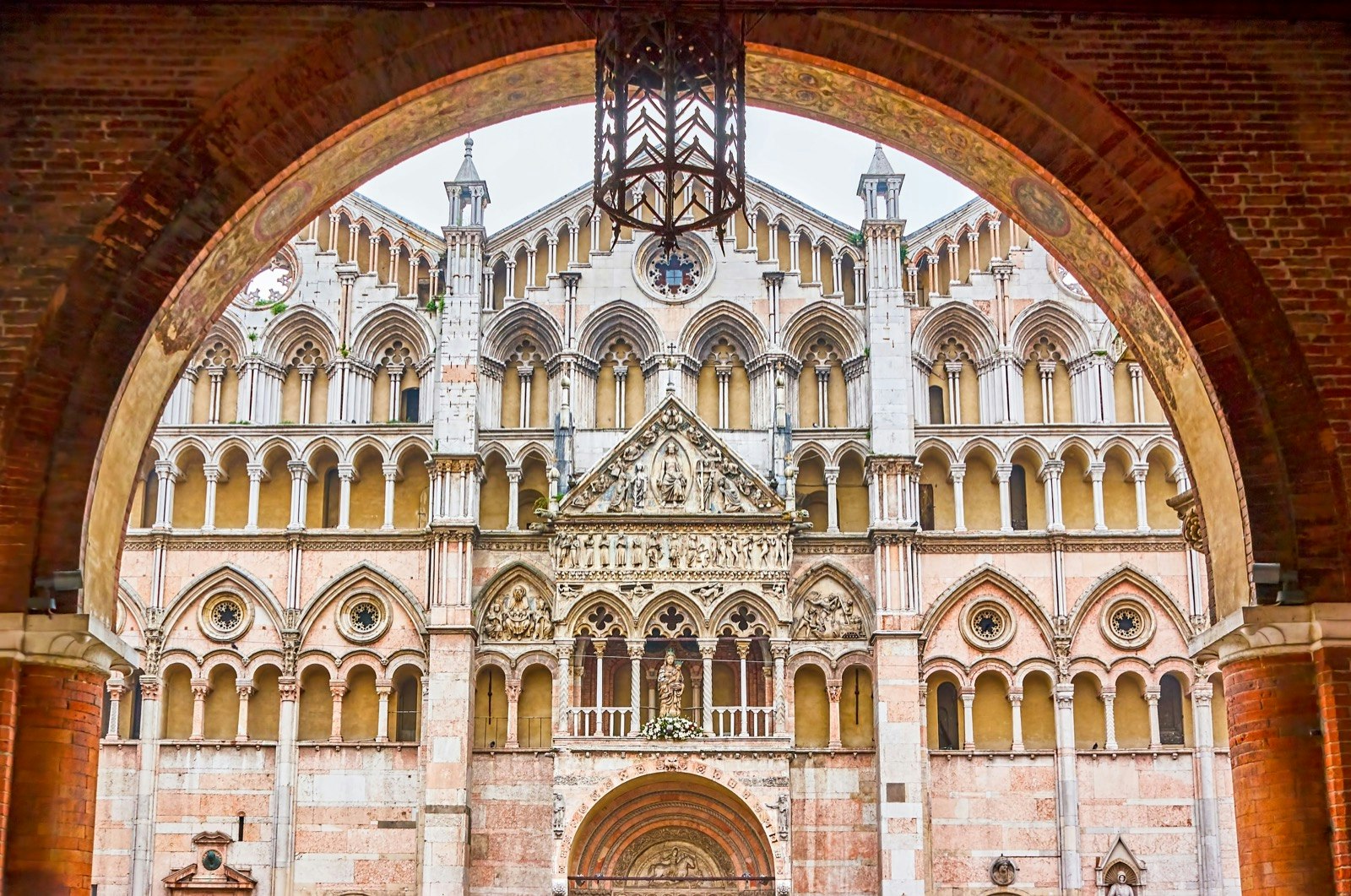Venice is one of the world’s wonders – a floating city where every building is a work of art, and every bridge is a masterpiece – but it can surely get crowded. During the peak summer season, as many as 100,000 tourists can wander its canals and piazzas daily, prompting new measures to cut the number of daily visitors.
If fighting the crowds for a view of Venice‘s squares, churches and palaces starts to wear you down, worry not. The surrounding Veneto region is a treasure trove of architecture, art and antipasti, and visitor numbers drop significantly once you cross the causeway from the floating city to its mainland sibling, Marghera.
From Palladian villas to Roman amphitheaters, here’s our pick of the best day trips from Venice – all accessible within two hours from the City of Bridges by public transport or car.
1. Admire the romance of Verona
Travel time: 1½ hours
There’s so much more to fair Verona than Romeo and Juliet, though it would be remiss not to pay your respects to the setting for Shakespeare’s most famous love story. With treasures ranging from Roman architecture and contemporary art to fertile hillside vineyards and fabulous restaurants in the city, Verona makes for an easy day trip and an even better overnight stay.
Don’t miss the magnificent Romanesque Basilica di San Zeno Maggiore, which contains the shrine to the city’s patron, St Zeno. Although visitors are drawn in droves to Juliet’s house, it’s worth remembering that Juliet only existed in the fertile imagination of Shakespeare, and the playwright never actually visited Verona. Focus instead on the city’s real treasure – its magnificent Roman Arena.
Opera performances and concerts are still staged here, but you can also visit and enact your gladiator fantasies between performances. Nearby, on the banks of the Adige river, the impressive 14th-century Museo del Castelvecchio displays works by Renaissance masters and contemporary artists. Across the Ponte Nuovo is the enchanting Giardino Giusti, where you can relax in verdant surroundings before heading back to Venice.
How to get to Verona: Take the regionale veloce train from Venice’s Stazione Santa Lucia to Verona Porta Nuova. The city center is a short walk from the station.
2. Embrace the arts in Padua
Travel time: less than 30 minutes
Padua is said to be the oldest city in northern Italy and boasts Roman archaeological ruins to prove its ancient pedigree. But the joy of the modern city is its rich collection of artistic and architectural treasures and Galileo’s alma mater, all within easy strolling distance from the train station.
The jewel in Padua’s crown is the Cappella degli Scrovegni (Scrovegni Chapel). The humble exterior belies Giotto’s dazzling frescoes inside, with scenes from the life story of Christ and a particularly graphic vision of hell. Advance booking is essential.
Nearby is the Palazzo del Bò, home to Padua University. Guided tours in English include visits to the fascinating anatomy theatre and a lectern belonging to the great astronomer Galileo. The Basilica di Sant’Antonio houses the relics of the city’s patron saint, while the university’s Botanical Garden, which once produced medicinal herbs, is today a renowned research center.
How to get to Padua: Take the train from Venice’s Stazione Santa Lucia to Padua (Padova). Regionali veloci (regional fast trains) cost a fraction of the Frecce high-speed trains and take just 26 minutes to cover the 40km (25 miles) between the two cities.

3. Escape the crowds in Treviso
Travel time: 30 to 40 minutes
With its pretty canals, Renaissance buildings and frescoed churches, the medieval walled town of Treviso is something of a mini Venice, minus the tourist hordes. It also offers excellent shopping opportunities without inflated tourist prices.
Artistic treasures include an Annunciation by Titian in the town Duomo and frescoes by the 14th-century artist Tommaso da Modena, which can be found in churches dotted around town. One fresco in the chapterhouse of the Chiesa di San Nicolò features the earliest depiction of eyeglasses in any work of art.
Don’t leave without trying some traditional Trevisan delicacies, including dishes made with the famous magenta radicchio di Treviso (a kind of red lettuce). Ristorante Toni del Spin is an excellent place to start your culinary explorations.
How to get to Treviso: Hop on the train from Venice’s Stazione Santa Lucia to Treviso Centrale. Start early, and you could even fit a visit into a morning, beating the crowds.

4. History buffs will adore Vicenza
Travel time: 45 minutes on the regionale veloce, or 1½ hours on the standard local train
Vicenza is the adopted hometown of the great Renaissance architect Andrea Palladio, and his influence can be seen everywhere. In medieval times, Vicenza was also known as the city of gold, and the town still has a dazzling array of goldsmiths to prove it.
Palladio’s most prominent achievement in Vicenza is the Teatro Olimpico, Europe’s oldest surviving indoor theatre. Although the framework of the building looks like marble, most of it is built in wood and plaster. The Renaissance stage set is still used today for theatre performances. Other Palladian treasures in the center include the Museo Civico, which contains works by Montagna, and the Loggia del Capitaniato, a grand palace on the Piazza dei Signori.
But it’s not all about Palladio in Vicenza: there’s the pretty Chiesa di San Lorenzo, with its tranquil cloister, and the Chiesa di Santa Corona, which contains the painting Baptism of Christ by Giovanni Bellini.
How to get to Vicenza: Take the train from Venice’s Stazione Santa Lucia to reach Vicenza – either the speedier regionale veloce train or the standard local train.

5. Find some R&R in the Euganean Hills
Travel time: 35 to 45 minutes
If you’ve overindulged in art and want to escape the bustling calli (streets) of Venice, head for the Euganean Hills for some natural R&R. Visitors to these fertile hills have enjoyed the area’s volcanic hot springs since Roman times, and it’s a great place for kids to let off steam.
For all things bucolic, take a walk in the hills or visit Montegrotto’s Roman ruins. Alternatively, drop by the Butterfly Arc and Fairy Wood in Montegrotto, a fun educational space for children. For highbrow culture, pop into the charming Casa di Petrarca where the great Renaissance poet Petrarch lived.
When it comes to hot springs, Montegrotto’s hotels and spas offer everything from luxurious therapies to purely medicinal treatments. The Hotel Mioni Royal San has half-day packages from €35, with a multitude of treatments from mud baths to aerosol therapy on the menu.
How to get to The Euganean Hills: You can reach Montegrotto by train in just over 35 minutes from Venice’s Stazione Santa Lucia. Alight at Terme Euganee-Abano-Montegrotto, where a handful of buses go to Arquà Petrarca. It’s easier to explore by rented car; the drive from Venice takes around 45 minutes.

6. Take a food tour of Ferrara
Travel time: 1½ hours
Ferrara was home to the d’Este noble dynasty, which left an indelible mark on the city. Amongst other landmarks, they were responsible for the impressive castle rising above the center. If you’re a devotee of traditional Italian cooking, Ferrara is also known for its homemade tortellini stores and superlative restaurants.
The imposing 14th-century Castello Estense towers over the center; once used for executions, its dungeons recall the d’Este family’s fearsome power. For a less blood-curdling visit, drop by the Romanesque-gothic Duomo with its imposing and ornate facade. The fascinating Museo della Cattedrale is housed across the road in a deconsecrated, brick-fronted church. A short walk north through the backstreets, the Palazzo dei Diamanti houses a mix of contemporary and Renaissance art.
It’s difficult to eat poorly in Ferrara. The town positively bulges with restaurants and foodie stores. Big Night, Ristorante da Giovanni is worthy of your dime; it serves excellent local dishes with views of the castle.
How to get to Ferrara: Regionale veloce trains run from Venice’s Stazione Santa Lucia to Ferrara hourly.

7. See the architectural highlights of Brenta Riviera
Travel time: 35 minutes by car
While Palladio made his home in Vicenza, he built some of his finest homes (for other people) in the surrounding countryside, including on the Brenta canal, created in the 16th century to link Venice and Padua. While it’s possible to cruise from Venice along the Brenta Riviera to visit these grand mansions, this is a very touristy option. It’s better to come with a rental car so you can explore at your own pace and stay ahead of the tour groups.
The highlights of a trip here are the elegant villas built along the canal banks – one designed by Palladio himself, and others later copies of his style. All of these grand homes are lavish, and they set the mold for country houses all over Europe after being spotted by wealthy heirs enjoying the Grand Tour.
Topping the bill is the Palladio-designed Villa Foscari, aka La Malcontenta, once the home of a grande dame who was exiled here by her family after committing adultery, but it’s also worth visiting the rest of the mansions. Villa Barchessa Valmarana, Villa Foscarini Rossi, Villa Pisani Nazionale and Villa Widmann Rezzonico Foscari appeared centuries after Palladio’s death but are unmistakably influenced by his style.
How to get to the Brenta Riviera: Various cruises from Venice visit Brenta Riviera, with stops at various villas, but this can be a crowded experience. Coming by car, take SS11 from Mestre-Venezia towards Padua and take the A4 autostrada towards Dolo/Padua.
